How to Use Wallet Addresses Safely and Effectively
In the ever-evolving world of cryptocurrency, understanding how to use wallet addresses safely and effectively is crucial for anyone looking to navigate the digital currency landscape. Wallet addresses serve as the digital equivalent of a bank account number, allowing users to send and receive cryptocurrencies like Bitcoin, Ethereum, and many others. However, with great power comes great responsibility. If you're not careful, you could fall victim to scams, lose your funds, or face unnecessary fees. So, how can you ensure that your wallet addresses are being used in the safest and most efficient manner possible? Let’s dive into the intricacies of wallet addresses and explore best practices that will help you protect your assets and make the most out of your cryptocurrency transactions.
At its core, a wallet address is a unique string of alphanumeric characters that represents a destination for cryptocurrency transactions. Think of it as your digital mailbox; just like you wouldn't want to share your home address with strangers, you need to be selective about who you share your wallet address with. Each address is generated based on a public key, which is paired with a private key that grants access to the funds. This pairing is what makes blockchain technology secure and decentralized. In this section, we’ll cover the significance of wallet addresses in the blockchain ecosystem and how they function to facilitate transactions.
Not all wallet addresses are created equal. There are different types of wallet addresses, each with its own advantages and disadvantages. Understanding these types can help you choose the right one for your needs. The most common types include:
- Legacy Addresses: The original format used in Bitcoin transactions.
- SegWit Addresses: Improve transaction efficiency and reduce fees.
- Native SegWit Addresses: The latest and most efficient format.
In the following sections, we will break down each type, focusing on their characteristics and how they can impact your overall cryptocurrency experience.
Legacy addresses are the first generation of Bitcoin addresses, usually starting with the number "1". While they are widely recognized and compatible with most wallets and exchanges, they come with certain limitations. For instance, legacy addresses do not support the newer transaction formats that can lower fees and improve transaction speed. This makes them less efficient, especially during times of network congestion. If you're still using legacy addresses, it might be time to consider upgrading for better performance.
Segregated Witness, or SegWit, addresses offer a significant upgrade over legacy addresses. By separating the signature data from the transaction data, SegWit reduces the size of transactions, allowing more transactions to fit into a single block. This not only speeds up transaction times but also lowers fees, making it an attractive option for users. As more wallets and exchanges adopt SegWit, its popularity continues to grow, and it's becoming the standard for many cryptocurrency transactions.
Managing your wallet addresses effectively is essential for safeguarding your assets. Here are some best practices to consider:
- Secure Storage: Always store your wallet addresses in a safe place. Consider using hardware wallets or cold storage solutions to keep your private keys offline and away from potential threats.
- Regular Updates: Just like you would update your passwords, keeping your wallet addresses updated can help prevent security breaches.
- Use Reputable Wallets: Always opt for well-reviewed and trusted wallets to manage your cryptocurrency.
By following these best practices, you can significantly enhance the security of your wallet addresses and your overall cryptocurrency experience.
When it comes to secure storage, hardware wallets are often considered the gold standard. These devices store your private keys offline, making them nearly impervious to online attacks. Cold storage options, like paper wallets, also provide a high level of security, but they come with their own set of risks, such as physical damage or loss. Whatever method you choose, ensure that you have a backup plan in place to recover your funds in case of emergencies.
Keeping your wallet addresses updated is not just about changing them frequently; it also involves being aware of the latest security practices and address formats. As the cryptocurrency landscape evolves, so do the threats. Regularly review your wallet management practices and make necessary adjustments to ensure that you're always one step ahead of potential risks.
Even seasoned cryptocurrency users can fall victim to common mistakes when using wallet addresses. Awareness is your best defense. Some frequent pitfalls include:
- Phishing Scams: Be vigilant about where you enter your wallet address. Scammers often create fake websites that mimic legitimate services to steal your information.
- Double Spending: This occurs when a user tries to spend the same cryptocurrency twice. It's vital to ensure that your transactions are secure and validated to avoid this risk.
By understanding these pitfalls and taking proactive measures, you can enhance your security and enjoy a smoother cryptocurrency experience.
Phishing scams are rampant in the cryptocurrency world, often targeting unsuspecting users through fake emails or websites. Always double-check URLs and ensure that you're on the correct site before entering your wallet address. If something feels off, trust your instincts and walk away.
Double spending is a significant risk in the cryptocurrency space, where a user attempts to spend the same coins more than once. This can happen if a transaction is not properly verified. Always ensure that your transactions are confirmed on the blockchain before considering them complete.
Q: What is a wallet address?
A: A wallet address is a unique identifier that allows users to send and receive cryptocurrencies. It functions like an email address for digital currencies.
Q: How can I keep my wallet address safe?
A: Use secure storage solutions, update your addresses regularly, and only use reputable wallets to manage your cryptocurrency.
Q: What are the different types of wallet addresses?
A: The main types include legacy, SegWit, and native SegWit addresses, each with its own advantages and disadvantages.
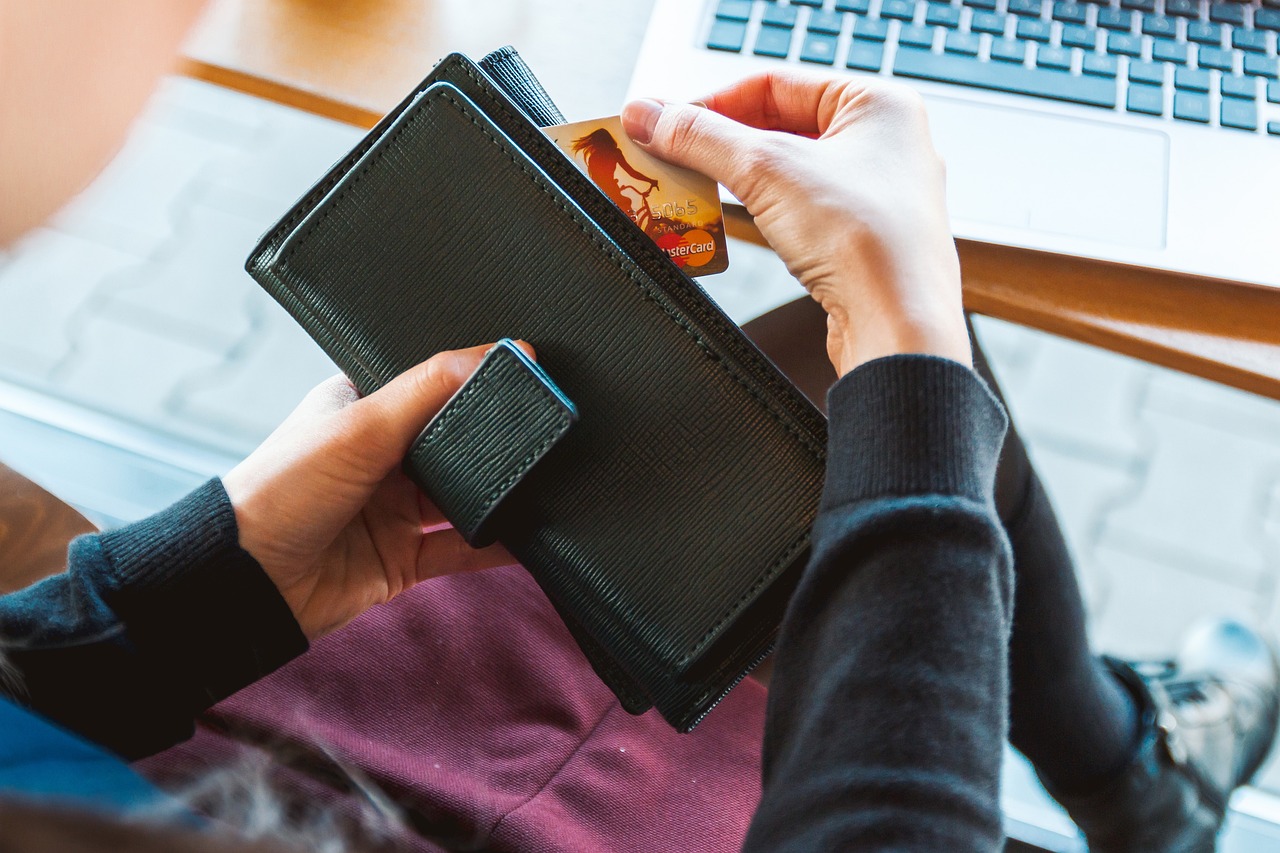
Understanding Wallet Addresses
Wallet addresses are the digital equivalent of your bank account number, but with a twist! They are unique identifiers that allow users to send and receive cryptocurrencies securely. Imagine trying to send a letter without an address; it would be impossible, right? Similarly, wallet addresses serve as the essential destination for your digital currency transactions. Each wallet address is a string of alphanumeric characters that is generated by your cryptocurrency wallet software. This ensures that every transaction you make is linked to a specific address, maintaining the integrity of the blockchain ecosystem.
The significance of wallet addresses cannot be overstated. They play a crucial role in the decentralized world of cryptocurrencies, where trust is established through cryptographic principles rather than central authorities. When you want to send Bitcoin to a friend, for example, you input their wallet address into your wallet application. This address acts as the beacon guiding your cryptocurrency to its rightful owner. Moreover, every transaction involving wallet addresses is recorded on the blockchain, creating a transparent and immutable ledger of all activities. This means that once a transaction is confirmed, it cannot be altered or reversed, providing a level of security that traditional banking systems may lack.
It's essential to understand that while wallet addresses are designed to facilitate transactions, they also come with their own set of challenges. For instance, if you mistakenly enter an incorrect wallet address, your funds could be lost forever, as there is no way to retrieve them from the blockchain. This highlights the importance of double-checking addresses before sending any cryptocurrency. Additionally, wallet addresses can vary in format depending on the type of cryptocurrency and the wallet you are using.
In the world of cryptocurrencies, there are different types of wallet addresses, which we will explore in the next section. Understanding these variations is crucial for anyone looking to navigate the digital currency landscape effectively. Each type of wallet address has its own advantages and disadvantages, impacting transaction fees, speed, and overall usability. So, whether you are a seasoned investor or just dipping your toes into the crypto waters, grasping the concept of wallet addresses is a fundamental step in ensuring a smooth and secure digital currency experience.

Types of Wallet Addresses
When diving into the world of cryptocurrencies, understanding the is essential for making informed decisions. Wallet addresses act as your digital bank account numbers, enabling you to send and receive various cryptocurrencies. However, not all wallet addresses are created equal. Each type comes with its own set of features, advantages, and potential drawbacks. In this section, we’ll explore the three primary types of wallet addresses: Legacy Addresses, SegWit Addresses, and Native SegWit Addresses.
Legacy Addresses are the original format used in Bitcoin transactions, often starting with the number '1'. These addresses have been around since the inception of Bitcoin and are widely recognized. While they are compatible with all wallets and exchanges, they have some limitations. For instance, transactions made with legacy addresses tend to incur higher fees and can be slower due to the larger amount of data they require for each transaction. Despite these drawbacks, many users still utilize legacy addresses because they are straightforward and universally accepted.
On the other hand, SegWit Addresses, which begin with '3', represent a significant evolution in cryptocurrency transactions. SegWit, or Segregated Witness, was introduced to improve transaction efficiency by separating the signature data from the transaction data. This means that more transactions can be processed in a single block, thereby reducing fees and wait times. As a result, SegWit addresses are becoming increasingly popular among cryptocurrency users who prioritize speed and cost-effectiveness. The adoption of SegWit has also contributed to the overall scalability of the Bitcoin network, making it a more viable option for daily transactions.
Finally, we have Native SegWit Addresses, which start with 'bc1'. These addresses are the latest iteration in the evolution of wallet addresses, designed specifically for the SegWit protocol. Native SegWit addresses offer even greater efficiency compared to regular SegWit addresses, as they reduce the transaction size further, leading to lower fees and faster confirmations. They are particularly beneficial for users who frequently make transactions, as they maximize the advantages of the SegWit technology.
To summarize, here's a quick comparison of the three types of wallet addresses:
| Type | Starting Character | Advantages | Disadvantages |
|---|---|---|---|
| Legacy Addresses | 1 | Widely accepted, simple to use | Higher fees, slower transactions |
| SegWit Addresses | 3 | Lower fees, faster transactions | Not all wallets support |
| Native SegWit Addresses | bc1 | Best efficiency, lowest fees | Less compatibility with older wallets |
Understanding these types of wallet addresses is crucial for any cryptocurrency user. Choosing the right one can make a significant difference in your transaction experience, from fees to processing times. As you navigate the digital currency landscape, consider your needs and preferences when selecting a wallet address type.
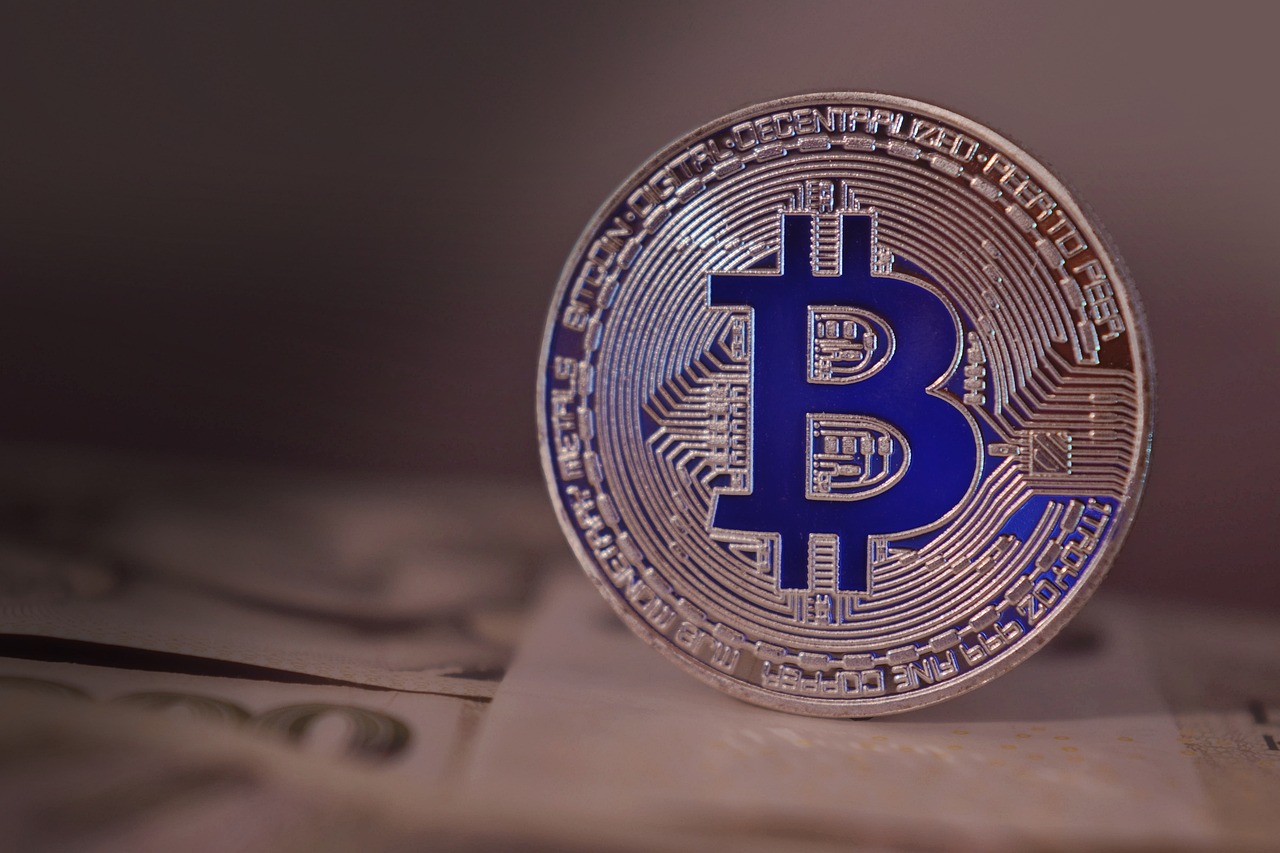
Legacy Addresses
When we talk about , we're diving into the roots of Bitcoin's transaction history. These addresses, which start with a 1, were the original format used in Bitcoin transactions and have been around since the inception of the cryptocurrency. They are often referred to as Pay-to-Public-Key-Hash (P2PKH) addresses, and they play a crucial role in the early days of digital currency. However, while they have served their purpose well, they do come with certain characteristics and limitations that users should be aware of.
One of the main characteristics of legacy addresses is their simplicity. They are straightforward to use, making them accessible for beginners. However, this simplicity comes at a cost. Legacy addresses tend to have higher transaction fees compared to newer address formats, especially during peak network congestion. This is because they require more data to be processed in each transaction, leading to increased costs. So, if you're looking to save some money on fees, you might want to consider other options.
Another aspect to consider is the security of legacy addresses. While they are generally secure, they lack some of the advanced features found in newer formats. For instance, legacy addresses do not support Segregated Witness (SegWit), which can help reduce transaction size and improve efficiency. This means that if you're using legacy addresses, you might be missing out on some of the benefits that come with the latest developments in blockchain technology.
In terms of usability, legacy addresses are still widely accepted across many wallets and exchanges, which is a significant advantage. However, as the cryptocurrency landscape evolves, the importance of understanding the differences between legacy and newer address types becomes increasingly crucial. Users should be aware of the potential for transaction delays and higher fees when relying solely on legacy addresses, especially during times of high network activity.
To sum it up, while legacy addresses have been the backbone of Bitcoin transactions for years, they do come with their own set of challenges. Here’s a quick comparison of legacy addresses against newer formats:
| Feature | Legacy Addresses | SegWit Addresses |
|---|---|---|
| Starting Character | 1 | 3 or bc1 |
| Transaction Fees | Higher | Lower |
| Network Compatibility | Widely accepted | Increasingly accepted |
| Efficiency | Standard | Improved |
As you can see, while legacy addresses are still functional and widely used, they may not be the best choice for users looking for the most efficient and cost-effective way to handle their cryptocurrency transactions. Understanding these nuances is essential for anyone looking to navigate the world of digital currencies effectively.
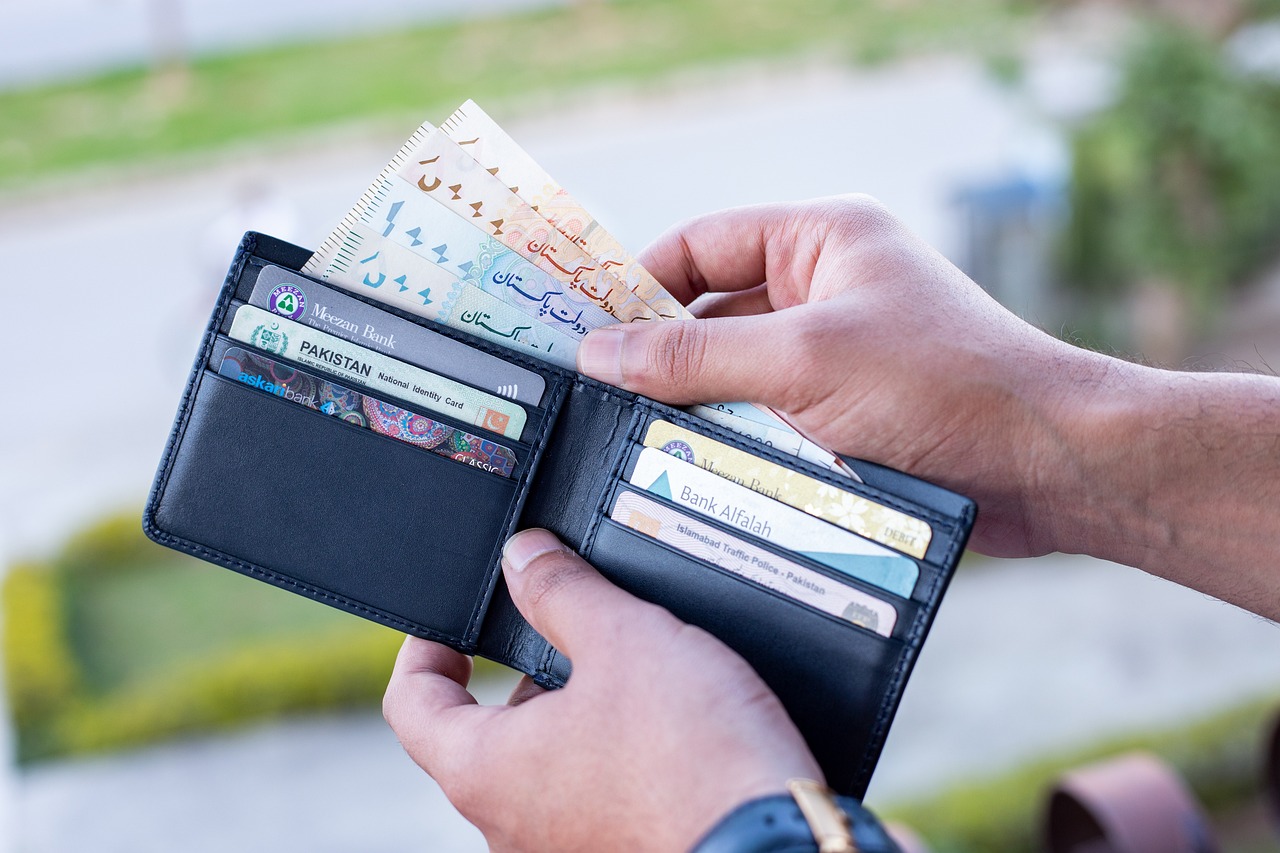
SegWit Addresses
SegWit, short for Segregated Witness, represents a significant evolution in the way cryptocurrency transactions are processed. It was introduced to address some of the critical limitations of Bitcoin's original transaction model. One of the primary benefits of SegWit addresses is their ability to enhance transaction efficiency. By separating the signature data from the transaction data, SegWit allows more transactions to fit into a single block. This means that users can enjoy lower fees and faster confirmation times, especially during periods of high network congestion.
To understand SegWit addresses better, it's essential to recognize how they differ from traditional legacy addresses. While legacy addresses start with a '1', SegWit addresses typically start with a '3' or 'bc1', depending on whether they are using the P2SH (Pay-to-Script-Hash) or native SegWit formats, respectively. This distinction is crucial for users when sending and receiving funds, as using the wrong address type could lead to transaction failures. The following table summarizes the differences:
| Address Type | Starting Character | Advantages |
|---|---|---|
| Legacy | 1 | Widely compatible, but higher fees |
| SegWit (P2SH) | 3 | Lower fees, faster transactions |
| Native SegWit | bc1 | Best efficiency, lowest fees |
Another compelling reason to adopt SegWit addresses is their role in promoting the scalability of the Bitcoin network. As more users flock to cryptocurrencies, the need for a robust and efficient transaction system becomes paramount. SegWit addresses help alleviate network congestion, making it easier for everyone to send and receive funds without the frustration of long wait times or exorbitant fees.
It's also worth noting that many wallets and exchanges now support SegWit addresses, further simplifying their use for everyday transactions. However, users should always double-check compatibility when sending funds, as not all platforms have fully embraced this technology yet. By choosing to use SegWit addresses, you are not only enhancing your own transaction experience but also contributing to a more efficient and scalable blockchain ecosystem.

Best Practices for Address Management
When it comes to managing your cryptocurrency wallet addresses, being proactive is key. The digital currency landscape can be tricky, and a single mistake can lead to significant losses. So, how can you ensure that your wallet addresses are managed safely and effectively? Here are some essential practices to keep in mind.
First and foremost, always secure your wallet addresses by using reputable wallets. Not all wallets are created equal. Some may have vulnerabilities that can expose your assets to cyber threats. Research and choose wallets that have a proven track record of security. Look for features like two-factor authentication (2FA) and encryption, which add an extra layer of protection.
Another critical aspect is the storage solution you choose for your wallet addresses. While software wallets are convenient, they can also be susceptible to hacks. Consider utilizing hardware wallets or cold storage options, which keep your private keys offline and away from potential online threats. These methods significantly enhance your security, making it much harder for hackers to gain access to your funds.
Moreover, regularly updating your wallet addresses is a practice that cannot be overstated. Just as you would change your passwords periodically, keeping your wallet addresses fresh helps to mitigate risks. This could involve generating new addresses for transactions or simply updating the software of your wallet to the latest version. Staying updated ensures that you benefit from the latest security features and fixes.
It’s also wise to back up your wallet addresses and private keys. Create multiple copies of your backup and store them in different secure locations. This could be as simple as writing them down and keeping them in a safe or using a secure cloud service. This way, if you lose access to your primary wallet, you still have a way to recover your funds.
Lastly, be cautious about sharing your wallet addresses. While it’s necessary to provide them for transactions, be mindful of how and with whom you share this information. Sharing your wallet address in public forums, for instance, could expose you to phishing scams or unwanted attention. Always double-check the recipient's address before sending funds, as sending cryptocurrency to the wrong address can be irreversible.
In summary, managing your wallet addresses effectively requires a combination of secure practices, regular updates, and a cautious approach to sharing information. By following these best practices, you can significantly enhance the safety of your cryptocurrency transactions and enjoy a more secure digital currency experience.
- What is the best type of wallet for storing cryptocurrencies?
Hardware wallets are generally considered the safest option for storing cryptocurrencies, as they keep your private keys offline.
- How often should I update my wallet addresses?
It's advisable to update your wallet addresses regularly, especially after significant transactions, to reduce the risk of exposure.
- Can I recover my funds if I lose access to my wallet?
If you've backed up your wallet addresses and private keys, you can recover your funds using those backups.
- What should I do if I think I've been scammed?
Immediately change your passwords, enable two-factor authentication, and report the incident to your wallet provider.

Secure Storage Solutions
When it comes to safeguarding your cryptocurrency assets, the importance of cannot be overstated. Just like you wouldn’t leave your house keys lying around in plain sight, your digital wallet addresses deserve the same level of protection. One of the best ways to ensure your wallet addresses remain safe from prying eyes and malicious actors is to use hardware wallets or cold storage options. These methods provide an extra layer of security that is crucial in today’s digital landscape.
Hardware wallets are physical devices that store your private keys offline. This means they are not connected to the internet, making them significantly less vulnerable to hacking attempts. Popular options include the Trezor and Ledger wallets, which are renowned for their robust security features and user-friendly interfaces. By using a hardware wallet, you can store multiple wallet addresses securely, allowing you to manage your cryptocurrency holdings with ease.
Another effective method is cold storage, which involves keeping your wallet addresses and private keys completely offline. This can be done through various means, such as writing your keys down on paper (often referred to as a paper wallet) or using a dedicated offline computer. While cold storage may seem cumbersome, it is one of the most secure ways to protect your assets from online threats. Just remember to store your paper wallets or offline devices in a safe place, like a safety deposit box, to mitigate the risk of physical theft.
It's also essential to regularly update your security practices. As technology evolves, so do the methods employed by cybercriminals. By staying informed about the latest security trends and regularly updating your hardware wallet's firmware or your cold storage methods, you can maintain a strong defense against potential threats. Moreover, always ensure that you are using reputable wallets and storage solutions. Researching and reading reviews can help you identify which options are trusted by the community.
In summary, utilizing secure storage solutions is a fundamental aspect of managing your cryptocurrency wallet addresses effectively. By opting for hardware wallets or cold storage methods, you can significantly reduce the risk of theft or loss. Remember, your digital assets are only as secure as the measures you take to protect them. So, take the necessary steps to ensure your wallet addresses remain safe and sound.
- What is a hardware wallet?
A hardware wallet is a physical device that securely stores your cryptocurrency private keys offline, making it less vulnerable to cyber attacks. - How does cold storage work?
Cold storage involves keeping your wallet addresses and private keys completely offline, which can be done through methods like paper wallets or dedicated offline devices. - Why is secure storage important?
Secure storage is crucial to protect your digital assets from theft, hacking, and other online threats, ensuring that your investments remain safe.
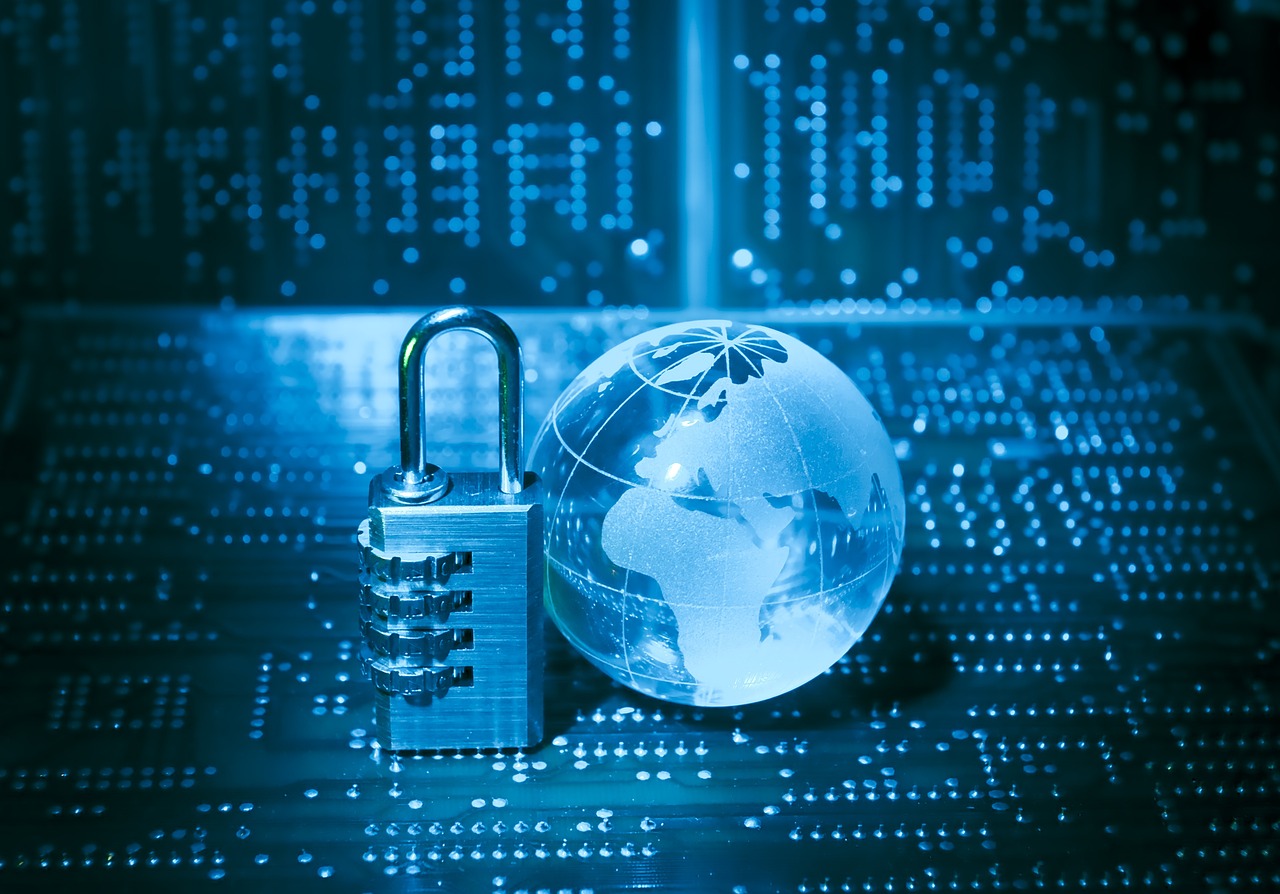
Regular Address Updates
In the ever-evolving landscape of cryptocurrency, keeping your wallet addresses updated is not just a good practice; it's a necessity. Just like changing your passwords regularly to enhance security, updating your wallet addresses can significantly reduce the risk of potential breaches. Many users may not realize that old addresses can become susceptible to various threats, such as hacking or phishing attempts. By routinely updating your wallet addresses, you can stay one step ahead of cybercriminals.
So, how often should you consider updating your wallet addresses? While there's no hard and fast rule, a good practice is to review your addresses every few months. This regular check-in can help you identify any outdated addresses that may still be in use. If you notice any suspicious activity or if you've shared your address widely, it's wise to create a new one. Think of it as changing your locks after moving into a new home; it just makes sense to ensure your security is top-notch.
Moreover, when you update your wallet addresses, it’s crucial to inform any parties that may need to send you funds. This could include friends, family, or even clients if you use cryptocurrency for business transactions. Ensure you communicate the updated address clearly to avoid any confusion. Using a clear and concise format, such as:
- Old Address: 1A2B3C4D5E6F7G8H9I0J
- New Address: 1K2L3M4N5O6P7Q8R9S0T
This way, everyone is on the same page, and you minimize the risk of funds being sent to an outdated address. Additionally, consider utilizing tools or services that can help automate this process, ensuring that your addresses are routinely updated without much hassle.
In conclusion, regularly updating your wallet addresses is a simple yet effective strategy to bolster your security in the cryptocurrency world. By making it a part of your routine, you can enjoy peace of mind knowing that your digital assets are better protected against potential threats.
Q1: Why should I update my wallet addresses regularly?
Regular updates help protect your assets from potential security threats and reduce the risk of unauthorized access.
Q2: How often should I update my wallet addresses?
While there is no set frequency, reviewing your addresses every few months is a good practice.
Q3: What should I do if I suspect my wallet address has been compromised?
If you suspect any compromise, immediately create a new wallet address and inform anyone who may need to send you funds.
Q4: Can I use the same wallet address indefinitely?
While you can, it’s not recommended due to potential security vulnerabilities. Regularly updating your address enhances your security.

Avoiding Common Pitfalls
When navigating the world of cryptocurrency, it's easy to stumble into pitfalls that could jeopardize your investments. One of the most common mistakes is falling for phishing scams. These scams often come in the form of emails or messages that appear to be from legitimate sources, urging you to click on a link that leads to a fake website designed to capture your wallet address and private keys. To avoid these scams, always double-check the URL of the website you are visiting and ensure it is secure (look for "https://" in the address). If something feels off, trust your instincts and don’t engage.
Another significant risk is double spending, which occurs when someone tries to spend the same cryptocurrency twice. This is a tricky situation that can happen if the network is not secure or if you are using unreliable wallets. To mitigate this risk, always confirm that your transactions are completed before attempting to make another transaction with the same funds. Additionally, using wallets that have built-in safeguards against double spending can provide an extra layer of security.
It's also crucial to be aware of address reuse. Using the same wallet address for multiple transactions can expose you to privacy risks and security vulnerabilities. For instance, if someone knows your wallet address, they can track all your transactions, which could lead to unwanted attention. Instead, consider generating a new address for each transaction. Most modern wallets offer this feature, allowing you to maintain your privacy while conducting transactions.
Lastly, never underestimate the importance of keeping your software up to date. Whether it's your wallet application or your device's operating system, updates often include crucial security patches that protect you from vulnerabilities. Make it a habit to regularly check for updates and apply them promptly. This simple act can save you from potential headaches down the road.
- What should I do if I think I've fallen for a phishing scam? If you suspect you've been scammed, immediately change your passwords and enable two-factor authentication on your accounts. Contact your wallet provider for further assistance.
- How can I check if my transaction has been double spent? Use a block explorer to verify the status of your transaction. If it shows as unconfirmed for an extended period, you may want to take precautions.
- Is it safe to use the same wallet address for multiple transactions? It's not recommended. Using unique addresses for each transaction enhances your privacy and security.
- How often should I update my wallet software? Regularly check for updates, ideally every few weeks or whenever you hear about new security patches.

Phishing Scams
In the digital realm of cryptocurrencies, have emerged as a significant threat, targeting unsuspecting users and their wallet addresses. These scams are designed to trick you into revealing sensitive information, such as your private keys or recovery phrases, often through deceptive emails or fake websites that mimic legitimate services. Imagine receiving an email that looks like it’s from your wallet provider, urging you to click a link to verify your account. Sounds harmless, right? But that link could lead you straight into a trap!
Phishing attacks can take many forms, but they all share a common goal: to steal your assets. Here are some common tactics used by scammers:
- Email Phishing: Scammers send emails pretending to be from a reputable source, asking for your wallet details.
- Clone Websites: These are fake websites that look identical to real wallet services, tricking you into entering your login credentials.
- Social Engineering: Scammers may pose as support staff, coaxing you into divulging sensitive information.
To protect yourself from these scams, it’s crucial to adopt a vigilant mindset. Here are some practical tips:
- Verify URLs: Always check the web address before entering any information. Legitimate sites will have HTTPS and look professional.
- Enable Two-Factor Authentication: This adds an extra layer of security to your wallet, making it harder for scammers to access your account.
- Be Skeptical of Unsolicited Communications: If you receive unexpected messages asking for personal information, think twice before responding.
In essence, staying informed and cautious is your best defense against phishing scams. Remember, if something seems too good to be true or feels off, it probably is! Always trust your instincts and take the time to verify before taking any action. Your cryptocurrency assets deserve the utmost protection, and by being proactive, you can significantly reduce the risk of falling victim to these malicious schemes.
Q1: What should I do if I think I've been a victim of a phishing scam?
A1: If you suspect that you've been compromised, immediately change your passwords, enable two-factor authentication, and monitor your accounts for any unauthorized transactions. Consider moving your assets to a more secure wallet.
Q2: How can I recognize a phishing email?
A2: Look for poor grammar, generic greetings, and suspicious links. Always verify the sender's email address and be wary of urgent requests for personal information.
Q3: Are there any tools to help prevent phishing attacks?
A3: Yes! Use security software that includes phishing protection, and consider browser extensions that warn you about potentially dangerous sites.
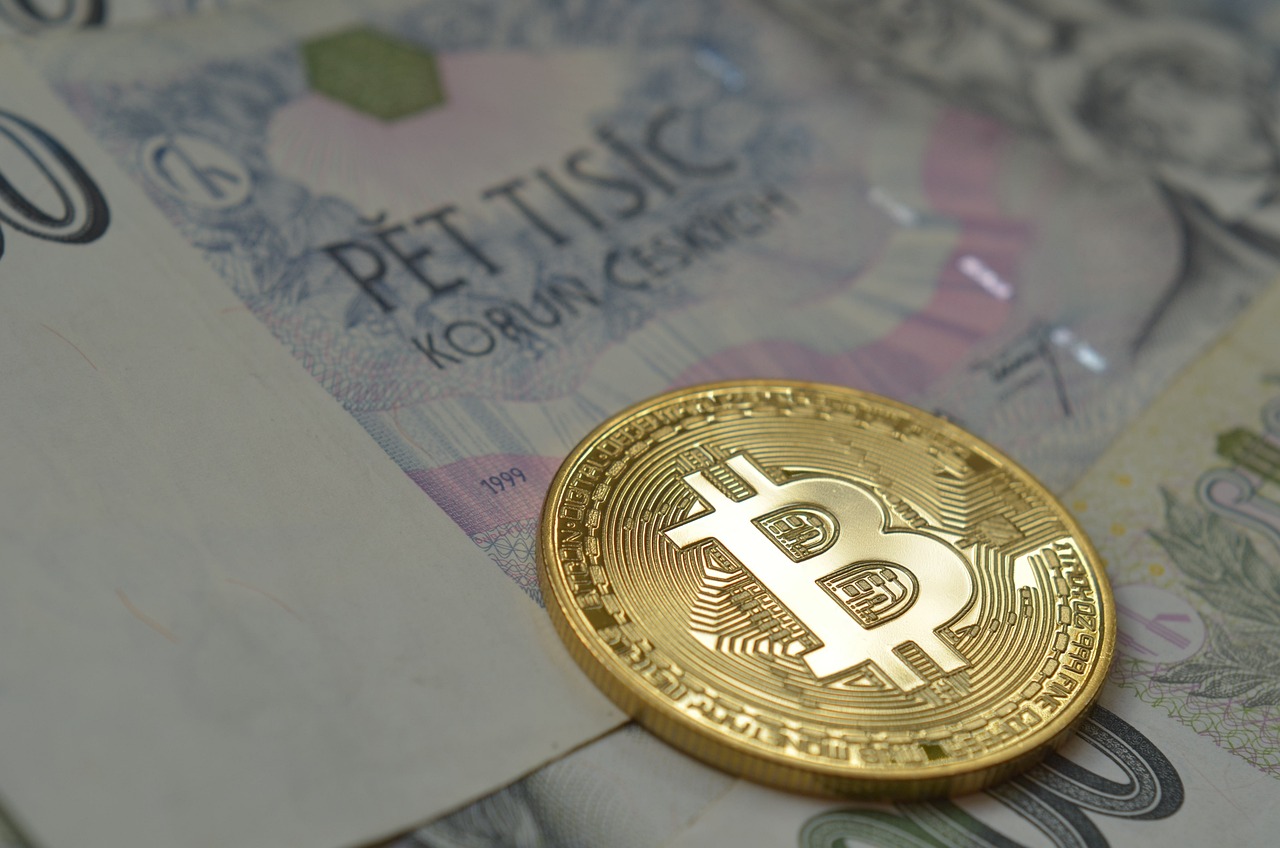
Double Spending
Double spending is a term that sends shivers down the spine of anyone involved in cryptocurrency transactions. Imagine having a magic coin that you can use to buy a coffee, and then somehow, you still have that same coin to buy a sandwich! Sounds like a dream, right? But in the world of digital currencies, this nightmare can become a reality if not properly managed. Essentially, double spending occurs when a user attempts to spend the same cryptocurrency unit more than once, which can lead to significant losses and a breakdown of trust in the system.
To grasp the concept further, let's break it down. In traditional finance, once a transaction is completed, the funds are immediately deducted from your account. However, in the decentralized realm of cryptocurrencies, transactions are verified by a network of nodes. If a user tries to send the same coins to two different recipients simultaneously, it creates a race condition where the network must determine which transaction is legitimate. This is where the importance of blockchain technology comes into play, as it helps to prevent double spending through consensus mechanisms. But, as with any technology, there are still risks involved.
To mitigate the risk of double spending, here are some best practices you can follow:
- Wait for Confirmations: Always wait for a certain number of confirmations before considering a transaction complete. This means waiting for the network to validate the transaction, which helps ensure that your coins are not being spent elsewhere.
- Use Reputable Wallets: Choose wallets that have robust security features and are well-reviewed by the community. Reputable wallets often have built-in measures to prevent double spending.
- Be Cautious with Transactions: When making transactions, especially large ones, double-check the recipient's address and ensure that you're not trying to spend the same coins simultaneously.
In conclusion, while double spending is a potential risk in cryptocurrency transactions, understanding how it works and implementing safe practices can significantly reduce your chances of falling victim to this issue. Just like you wouldn't walk around with a wallet full of cash in a crowded area without being vigilant, the same caution should apply when dealing with digital currencies. After all, in the fast-paced world of cryptocurrencies, a moment of carelessness can lead to a significant setback.
Q: What is double spending?
A: Double spending occurs when a user attempts to spend the same cryptocurrency unit more than once, leading to potential losses and transaction failures.
Q: How can I avoid double spending?
A: To avoid double spending, wait for transaction confirmations, use reputable wallets, and be cautious with your transactions.
Q: Why is double spending a problem in cryptocurrencies?
A: Double spending undermines the trust and integrity of the cryptocurrency system, as it can lead to fraudulent transactions and loss of funds.
Frequently Asked Questions
- What is a wallet address?
A wallet address is a unique string of characters that allows you to send and receive cryptocurrencies. Think of it as your bank account number, but for digital currencies. Each address is linked to a specific wallet and is essential for transactions in the blockchain ecosystem.
- What are the different types of wallet addresses?
There are several types of wallet addresses, including legacy, SegWit, and native SegWit addresses. Legacy addresses are the original format used in Bitcoin, while SegWit addresses offer improved transaction efficiency and lower fees. Native SegWit addresses provide even more benefits, like further optimization for transactions.
- How can I safely manage my wallet addresses?
Managing your wallet addresses safely involves secure storage solutions, such as hardware wallets or cold storage. Regularly updating your addresses and using reputable wallet services can also help protect your assets from potential threats.
- What are phishing scams, and how can I avoid them?
Phishing scams are fraudulent attempts to obtain sensitive information, like wallet addresses, by pretending to be a trustworthy source. To avoid falling victim to these scams, always verify the authenticity of links and emails before clicking on them, and never share your wallet address or private keys with anyone.
- What is double spending, and how can I prevent it?
Double spending is a risk where a user tries to spend the same cryptocurrency more than once. To prevent this, always ensure that your transactions are confirmed on the blockchain before considering them complete. Using reputable wallets that have built-in safeguards can also help mitigate this risk.



















